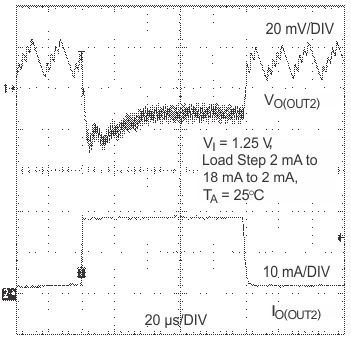SLAA398A September 2008 – August 2018 MSP430F4794 , MSP430F4794
3 TPS60313 Description and Features
For the application described in this document, the TPS60313 inductorless dc/dc charge-pump converter was selected for its low quiescent current and high-efficiency performance at low operating currents. These attributes make it an ideal fit for use with MSP430 microcontrollers in single-cell applications.
The TPS60313 step-up, regulated charge pump generates a 3-V output voltage from a 0.9-V to 1.8-V input voltage. Only five small 1-µF ceramic capacitors are required to build a complete high-efficiency dc/dc charge-pump converter.
In SNOOZE mode, the TPS60313 operates with a typical operating current of 2 µA, while the output voltage is maintained at 3 V ± 10%. Load current in SNOOZE mode is limited to 2 mA. If the load current increases above 2 mA, the device automatically exits the SNOOZE mode and operates in normal mode to regulate to the nominal output voltage with higher output currents.
While the SNOOZE mode enables greater efficiency at low currents, users must recognize that the output voltage ripple is greater than when SNOOZE mode is disabled (see Figure 3).
 Figure 3. TPS60313 Load Transient Response
Figure 3. TPS60313 Load Transient Response Channel 1 shows the effect of the SNOOZE feature on the regulated output voltage. Channel 2 shows the output current transitions that cause the device to enter and exit SNOOZE mode. This behavior can possibly affect ADC conversion results or other processes that are sensitive to supply ripple, so it is recommended to take the device out of SNOOZE mode before doing any A/D conversions. Once SNOOZE mode is disabled, the output voltage is regulated with greater accuracy, but the quiescent current is higher.